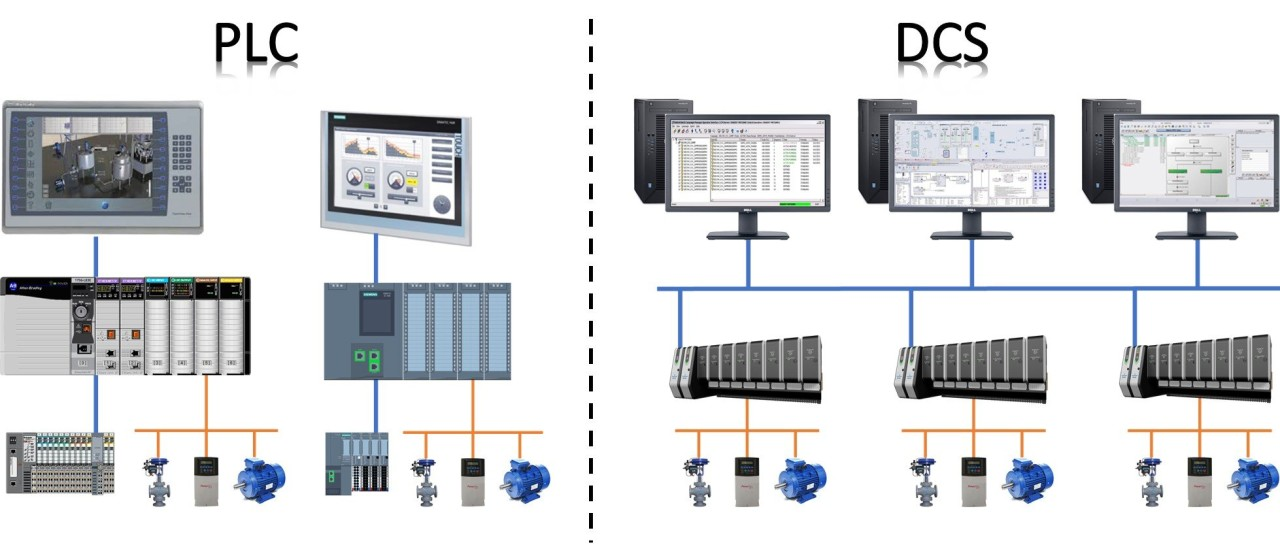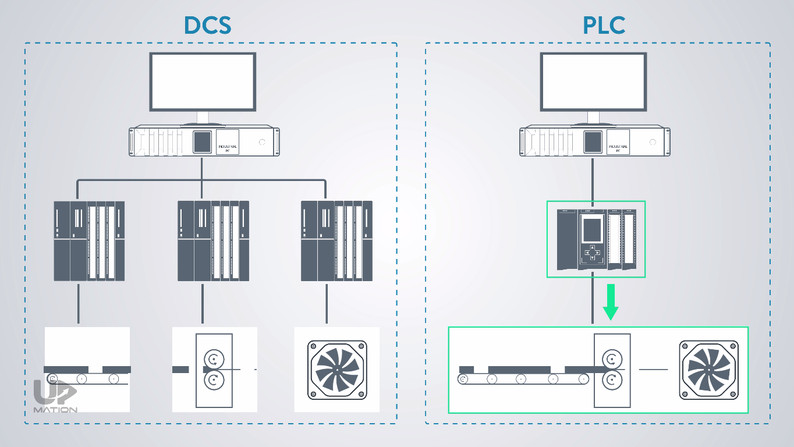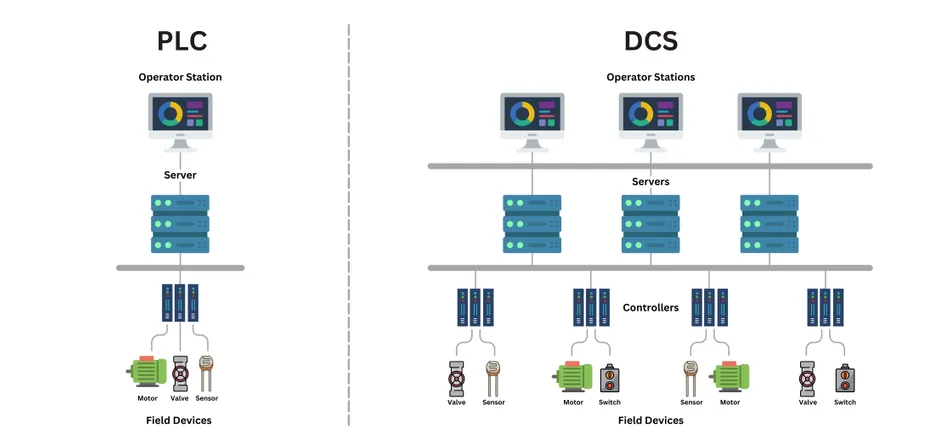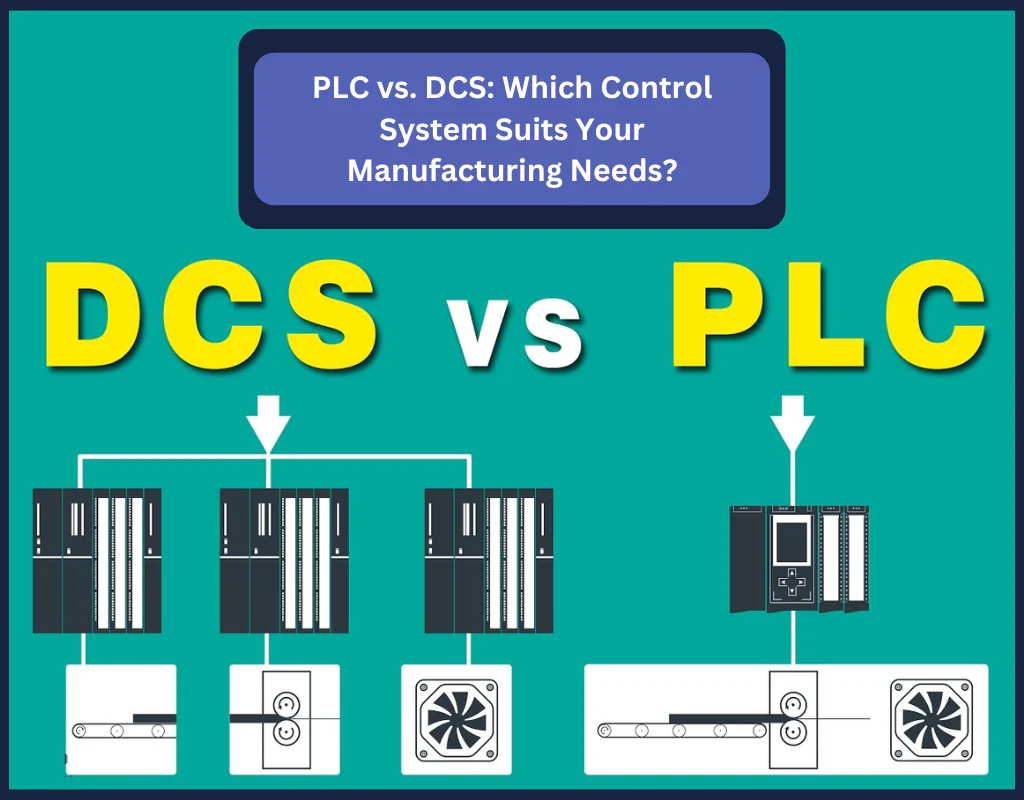
PLC (Programmable Logic Controller) and DCS (Distributed Control System) are both commonly used technologies in industrial automation control systems. The following is an introduction to their characteristics, application scenarios, etc.:
Basic concepts:
PLC: A digital arithmetic unit designed for use in industrial environments. It uses programmable memory to store user programs, execute user-oriented instructions such as logical operations, sequential control, timing, counting and arithmetic operations, and control various types of machinery or production processes through digital or analog input/output.
DCS: A digital control system that uses a multi-layer hierarchical structure to distribute control functions to various control units, while operations and management are centralized. It integrates computer technology, network communication technology, automatic control technology, redundancy and self-diagnosis technology, and connects multiple computers and special control software through a communication network to achieve centralized monitoring and decentralized control of industrial processes.

Control capability:
PLC:
Strong logic control capability: Good at handling switch logic control, can realize complex logic operation and sequential control, such as the start and stop, sequential action and other control of various equipment in the automated production line, which can replace the traditional relay circuit.
Continuously improving analog processing capability: can collect and control analog quantity through A/D and D/A conversion modules, such as processing analog signals such as temperature, pressure, flow, etc., to achieve closed-loop control, which is widely used in industrial process control.
Good motion control function: with a special motion control module, it can drive stepper motors or servo motors to achieve precise control of circular motion or linear motion, and is often used for motion control of machine tools, robots, elevators and other equipment.
DCS:
Excellent process control capability: very suitable for large-scale and complex continuous process control, with high control accuracy and good stability for analog quantities such as temperature, pressure, flow, etc., which can meet the strict control requirements of the production process in the chemical, electric power, petroleum and other industries.
Strong coordination control capability: can realize coordinated control and optimized scheduling between multiple equipment and multiple production links to ensure efficient and stable operation of the entire production process. For example, in a large oil refinery, DCS can coordinate and manage the operation of each production unit.
System structure:
PLC: Generally, the structure is compact, and a single PLC can control a single device or a small production unit. Its system is usually composed of basic components such as CPU (central processing unit), memory, input/output module, power supply, etc. The network structure is relatively simple, mostly a single layer of network.
DCS: The system structure is relatively complex, adopting a hierarchical structure, including multiple levels such as process control level and process monitoring level, and each level is composed of several subsystems. In terms of hardware, in addition to controllers, I/O modules, etc., it also includes operation stations, engineer stations, communication networks, etc., and has a two-layer network structure, one for the process level network and one for the operation level network.

Communication and scalability:
PLC: Communication capabilities are constantly improving, but communication protocols are usually more specialized, and communication compatibility between PLCs from different manufacturers may be poor. In terms of scalability, it is relatively easy to expand on a small scale, but large-scale system expansion may require more technical support and resource investment.
DCS: The communication network is relatively open, and standard communication protocols such as Ethernet, TCP/IP, etc. are generally used to facilitate integration and communication with other systems. It has good scalability and can easily add new control nodes, devices and functional modules to meet the needs of the company’s continuous development.
Reliability and security:
PLC: High reliability, strong anti-interference ability, advanced anti-interference technology is adopted in the internal circuit, and it has hardware fault self-detection function, and can issue alarm information in time when a fault occurs. It is widely used in some small automatic control places with high reliability requirements, but in large-scale, high-security systems, additional safety measures and redundant configurations may be required.
DCS: It has high reliability and stability, and usually adopts redundant technology, including controller redundancy, power supply redundancy, communication redundancy, etc. to ensure uninterrupted operation of the system. In terms of security, it has strict safety standards and protocols, which can meet high-security control scenarios.
Applicable scenarios:
PLC: Applicable to small-scale, single process or equipment-level control, such as the control of packaging machinery, injection molding machines, CNC machine tools and other equipment, as well as the automation control of small production lines.
DCS: Applicable to large-scale, complex process control applications, such as production process control and management of large industrial enterprises such as large chemical plants, refineries, power plants, and steel plants.
Cost:
PLC: The cost of system hardware and software is relatively low, and the maintenance and update costs are also relatively economical. For projects with limited budgets and relatively simple control requirements, PLC is a more economical choice.
DCS: The initial investment cost of the system is high, including the costs of hardware equipment, software authorization, engineering implementation, etc. At the same time, the operation and maintenance costs are also relatively high, requiring professional technicians for maintenance and management.

In summary, PLC control systems and DCS control systems are both indispensable control systems for enterprises to build intelligent digital factories.


